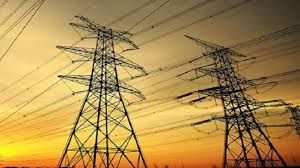
Bhopal (Madhya Pradesh): Seeing that power demand will shoot up substantially in future, the State Planning Cell (SPC) of Madhya Pradesh Power Management Company has carried out an estimation of power requirement up to the year 2034.
Accordingly, the electricity department is planning to meet the escalating power demand of the future. As per the officials, the state's energy demand is estimated to rise to 33,700 megawatt in 2033-34.
“ We have estimated the power demand up to the year 2034 and accordingly planning will be done to meet the power requirement,” said a senior official of the energy department, while talking to Free Press. Chief General Manager, SPC, Feroz Meshram said that assessment of long term power requirement has been done. The electricity requirement of next year is estimated to be around 21,000 megawatt and following year’s power demand will be 23,500 megawatt.
In the year 2033-34, the state's energy demand will rise to 33,700 megawatt. For the upcoming Rabi season, power requirement will reaach upto 19000 megawatt, said official. To meet the projected power needs of Rabi season, the state power department is mulling over getting back the electricity given to other states under the power bank system.
Focus on increasing renewable energy production
Sources in Madhya Pradesh Power Management Company told Free Press that under the head of resource adequacy, discussion is underway to increase the renewable energy production in a bid to reduce carbon footprints. Thermal power plants lead to more carbon emission. The discussion is also underway to store solar energy in batteries and to go for pumped storage. Such things are a costly affair and also their capacity is only for a short duration.
As of now, the State is devoid of both the facilities. Pumped storage is a process wherein water from ground source is taken to the storage tank situated on upper hill or upper reaches during day time and at night, water is released on the turbine to produce the power.
Power demand estimate
2025 21,000 megawatt
2026 23,500 megawatt
2033-34 33,700 megawatt